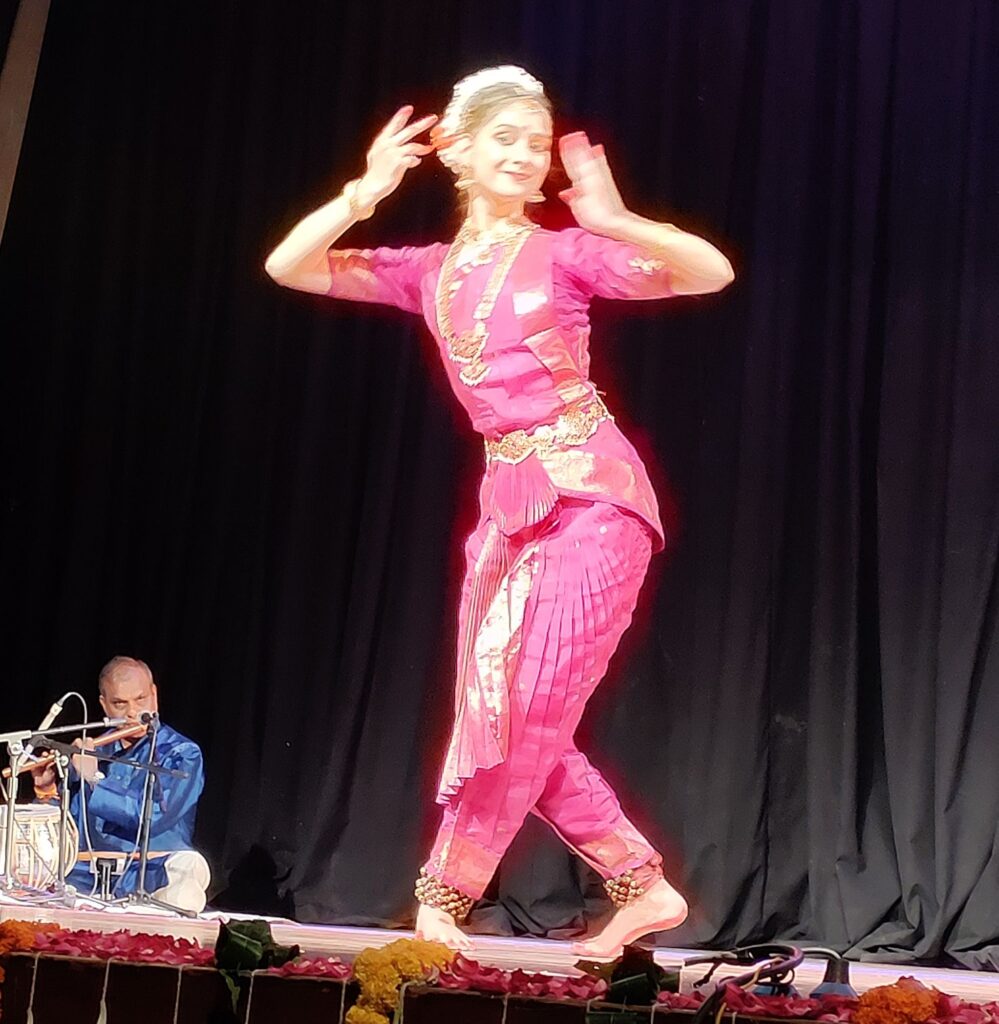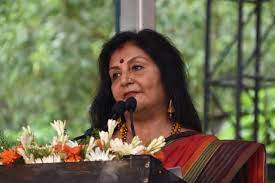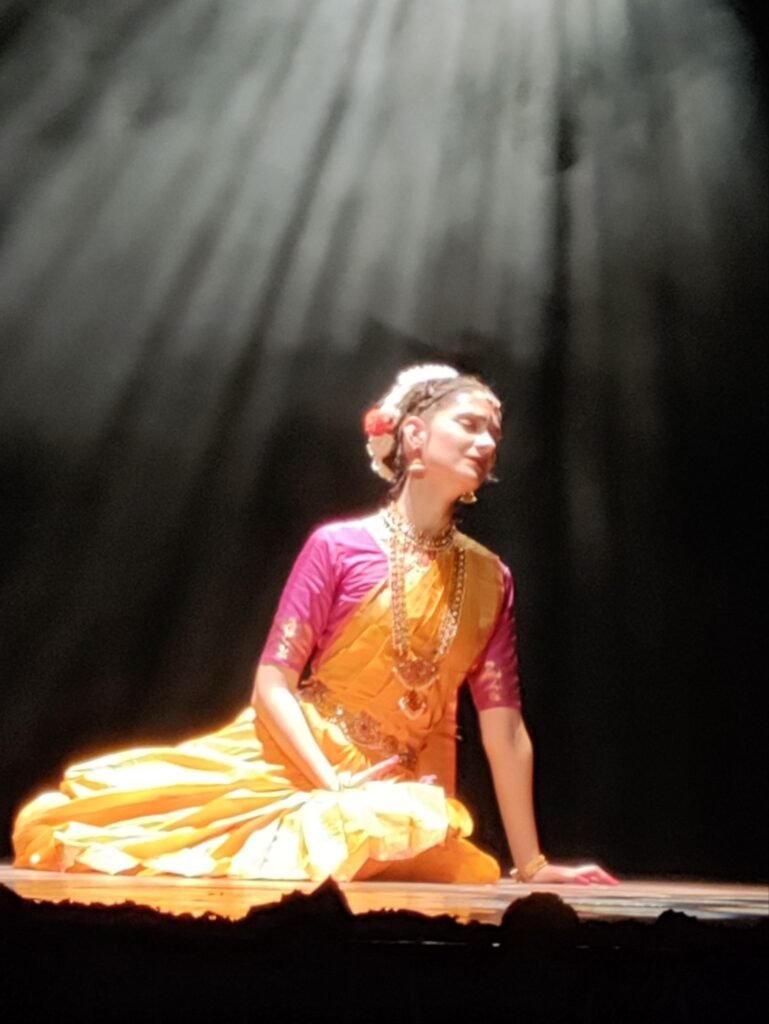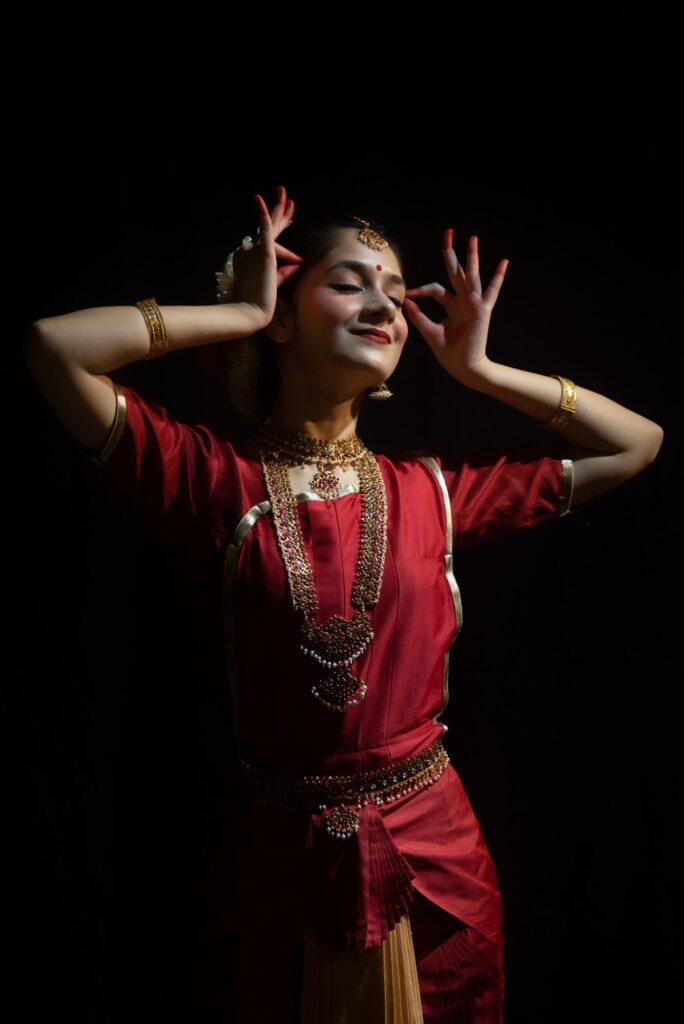VAIDEHI-Shruti Verma’s Rendition of Pivotal Scenes from Sita’s World

Sindhu Mishra’s Aayam presents VAIDEHI: Sita’s World in Tulsidas Ramayana
This rendition offers a fresh perspective on the Ramayana, focusing on pivotal scenes from Sita’s viewpoint—a rare approach. The choreography and concept, curated by Guru Smt. Sindhu Mishra, provide a captivating retelling of this timeless epic. Shruti Verma, a senior disciple under Guru Smt. Sindhu Mishra’s guidance, displays a profound dedication to Bharatanatyam, infusing passion and determination into her pursuit.

The Visionary Guru Smt. Sindhu Mishra
Shruti’s performance brings every aspect of body and soul to life. Bharatanatyam, as an art form, embodies the essence of the world around us. It encapsulates the movements of trees, flowers, breeze, birds, animals, and all living beings, enabling the dancer to communicate with both the external and internal worlds. This synergy between Bharatanatyam, nature, and self-expression goes beyond mere aesthetics, delving into profound narratives such as the Ramcharitmanas, vividly portrayed through the dancer’s solo performance.

Agony in imprisonment
Shruti embodies a spark of vibrant, contemporary creativity. Supported by her unwavering Guru, she explores modern interpretations of this traditional art form, crafting soul-stirring experiences through her dance, both for herself and her audience.
A vital member of the Aayam dance troupe, Shruti has amassed significant on-stage experience through enthusiastic participation in numerous group performances. Her portrayal of the iconic Sita in Aayam’s thematic production, Vaidehi, breathes new life into the character, offering a fresh interpretation of the epic narrative.
Shruti’s dance is a harmonious blend of exuberant joy and profound emotion, channeling grace and divinity with each movement. Alongside her Bharatanatyam training, Shruti is currently pursuing a Bachelor’s in engineering, exemplifying a balance between tradition and modernity in her artistic journey.
Performance Highlights:
Each segment of Vaidehi encapsulates the essence of Bharatanatyam, blending intricate footwork, expressive gestures, and emotive storytelling to transport the audience into the heart of the Ramayana’s narrative, offering a fresh perspective on timeless tales.
● Shri Ram Chandra Kripalu Bhajman:The performance starts with Shri Ram Chandra Kripalu Bhajman – a well-knownbhakti piece on Lord Ram. Written by Saint Tulsidas, this profound poetry expresses a deep admiration for Lord Ram’s awe-inspiring and beautiful characteristics. With each verse overflowing with adoration and humility, the piece exalts his divine magnificence.
श्री रामचन्द्र कृपालुभज मन हरण भव-भय दारुणम ्।
नव-कंज-लोचन कंज-मखु कर-कंज पद-कंजारुण॥ं
Set to Ragam Sindhu Bhairavi (राग सि धं ुभरैवी) and Talam Misra Chapu (मि स्र चाप)ू
Sung on stage by Shri G. Elangovan
● Varnam: This was the longest and most elaborate segment consisting of jathis (rhythmic patterns) and abhinaya. The poetry is taken from Baal Kand of Tulsidas’ Ramcharitmanas. In the narrative, Sita finds herself deeply captivated by Ram’s beauty upon seeing him in the gardens of Mithila, but soon grows dejected as she worries about him not being able to break Pinaak, Shiva’s bow. She heads to Devi Bhavani’s temple, expressing her devotion and humility through prayers and offerings. Devi, moved by Sita’s sincerity, bestows upon her a divine blessing,assuring her that her heart’s desire will be fulfilled, and she will have the one she adores as a beloved bridegroom.This moment marks a turning point in Sita’s journey, where her faith and devotion are rewarded with the promise of divine intervention in her love story with Ram.
Set to Ragam Bageshri (राग बागेश्री) and Talamaalika consisting of Chatusra Ekam (चतस्रु एकम) and Misra Chapu Taal (मि स्र चाप)ू Composed and sung by Shri Nitin Sharma
● Padam: “Suno Kapi ” is a pure abhinaya piece, based on the poetry of Surdas. The Padam depicts an emotional moment from epic Ramayana — when Hanuman reaches Ashok Vatika and gives Ram’s ring to Sita. In the confinement of Ravana, Sita, an incomparable beauty and an epitome of dedication, self-sacrifice, courage and purity, has turned into a picture of grief. In his inimical style, Surdas’s rendition of Sita diverges from her typical portrayal, highlighting her sarcasm amidst despair, showcasing a spectrum of emotions—from disillusionment to profound suffering and emotional anguish due to her prolonged separation from Ram.
सनु ुकपि वैरघनु ाथ नाहीं
Set to Ragam Sarangi and Talam Adi
Composed and sung by Shri Nitin Sharma
● Thillana: This is a rhythmic piece in carnatic music that is generally performed at the end of the repertoire. Thillana uses Tala phrases in the Pallavi, Anupallavi and lyrics in the Charnam. The Charanam of this thillana honors Shri Ram, the valiant son of Dashrath renowned for vanquishing Ravana and reuniting with Sita, and revered as the master of Hanuman.
Set to Ragam Bhimpilasi (राग भीमपि लासी) and
Triputa Taal (त्रि पटु ताल) in Khanda Jaati (खडं जाति )
Composed by Guru Govind Rajan Sung on stage by Shri G. Elangovan
